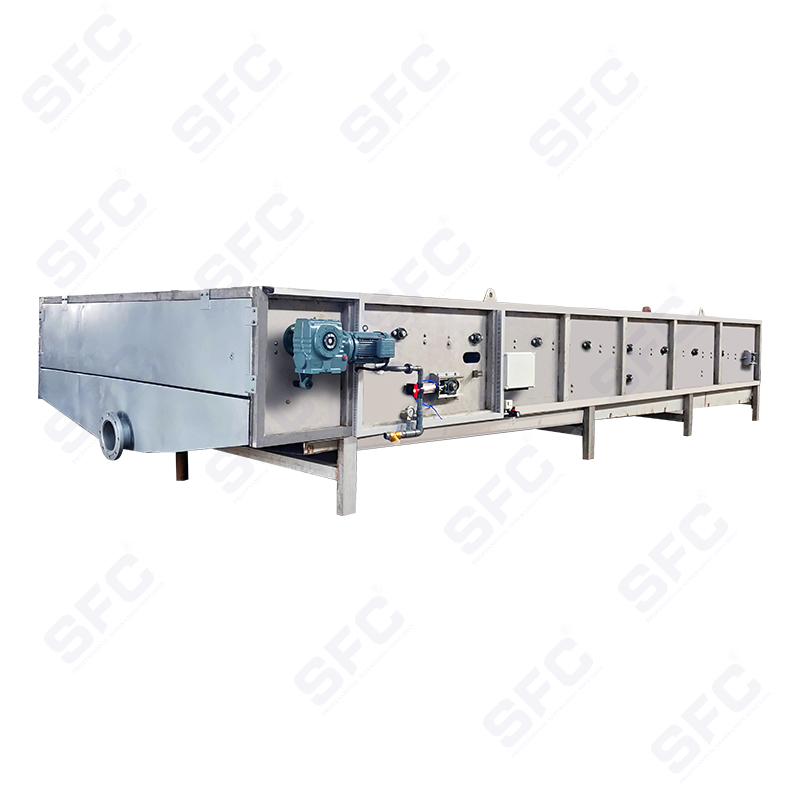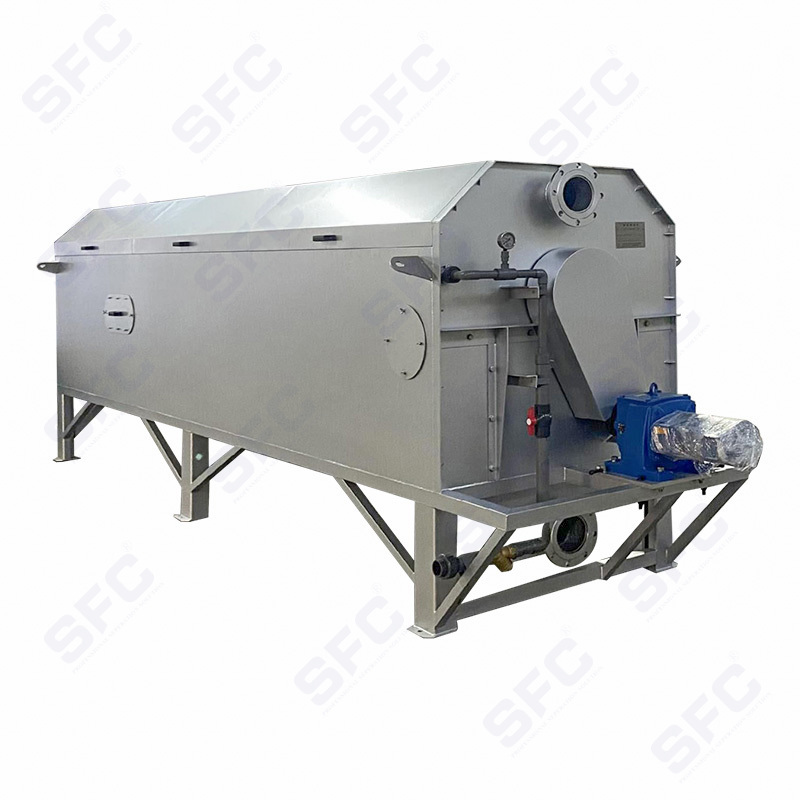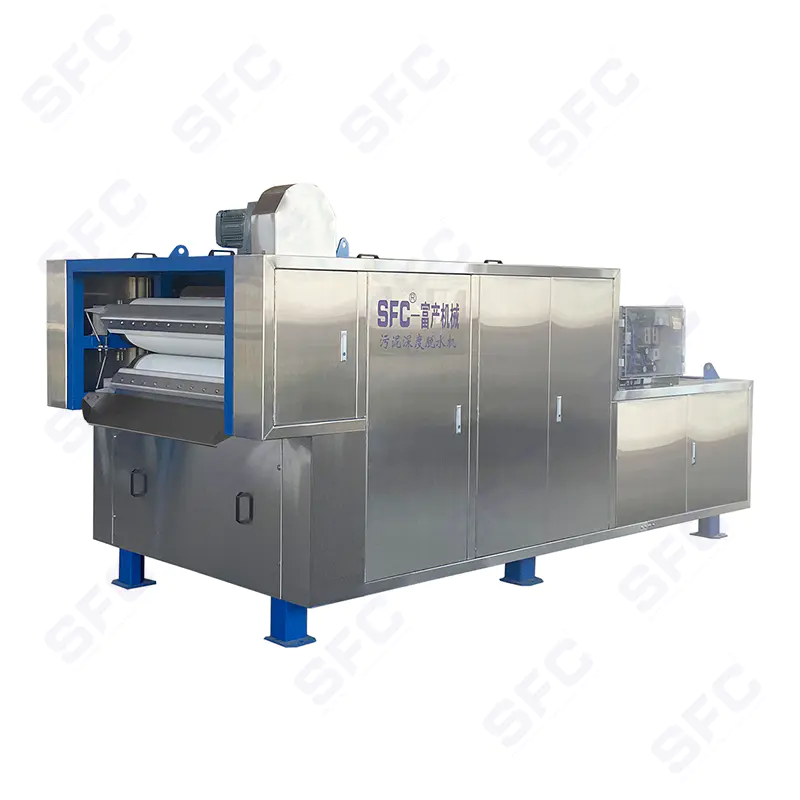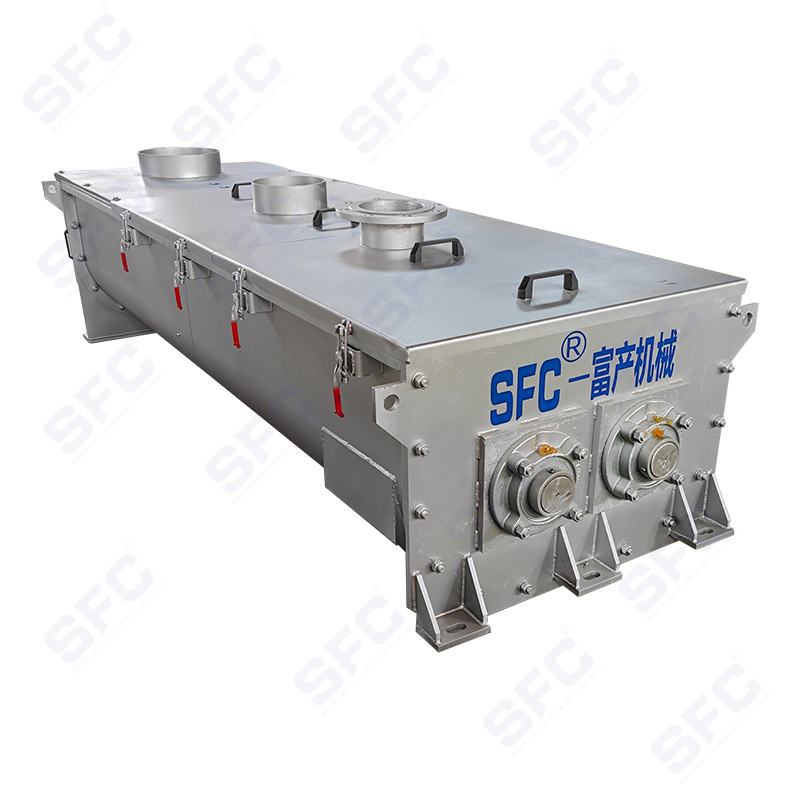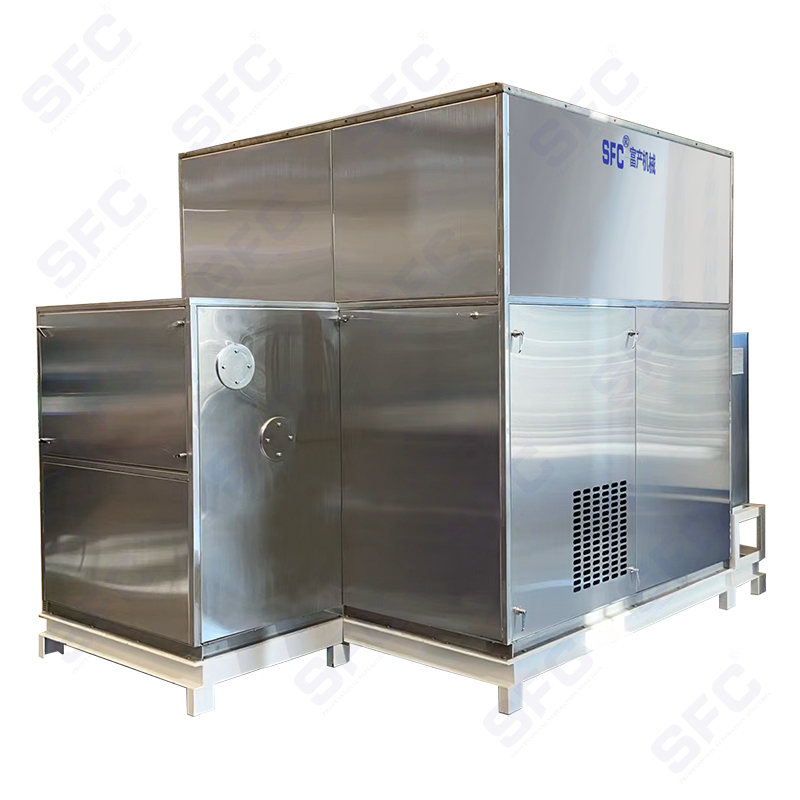How Energy-Efficient Are Rotary Drum Sludge Dewatering Machines Compared to Other Dewatering Equipment?
Sludge management is one of the most critical operations in wastewater treatment plants and various industrial processes. The removal of excess water from sludge not only reduces the volume of waste that needs to be transported or disposed of but also minimizes environmental risks and operating costs. Among the various types of dewatering equipment available today, the rotary drum sludge dewatering machine has gained recognition for its efficiency, compact design, and relatively low energy consumption.
1. Overview of Sludge Dewatering Equipment
Before comparing efficiency, it is important to understand the major categories of sludge dewatering equipment:
Rotary Drum Sludge Dewatering Machine: Uses a rotating drum fitted with a screen or filter to separate water from sludge through filtration and mechanical pressure.
Belt Filter Press: Uses two continuous belts and a series of rollers to squeeze water out of sludge.
Centrifuge (Decanter Centrifuge): Employs centrifugal force at high speeds to separate water and solids.
Screw Press: Uses a screw mechanism and pressure to gradually compact sludge and force out water.
Each system has unique features and energy demands depending on sludge characteristics and plant requirements.
2. Working Principle of a Rotary Drum Sludge Dewatering Machine
The rotary drum sludge dewatering machine typically consists of a cylindrical drum covered with a fine mesh or perforated surface. The sludge is fed into the drum, where it is rotated at a controlled speed. As the drum rotates, water drains out through the mesh under the influence of gravity and slight pressure, while the solids are retained inside until they are discharged.
The operation is continuous and relatively simple, requiring far less mechanical force and speed compared to centrifuges. This inherently translates to lower energy consumption and reduced wear-and-tear on components.
3. Energy Efficiency Comparison
a. Rotary Drum Sludge Dewatering Machine
Energy Consumption: Low to moderate. The rotation of the drum requires electricity, but speeds are relatively low compared to centrifuges.
Efficiency: Good for sludge with moderate solid concentrations; typically achieves dry solids content between 15–25%.
Advantages: Stable energy use, low maintenance requirements, and minimal operator supervision.
b. Belt Filter Press
Energy Consumption: Moderate. Requires electricity for belt movement, rollers, and auxiliary systems such as polymer dosing.
Efficiency: Can achieve 15–25% dry solids content, similar to rotary drums, but requires more energy for belt washing and tensioning.
Advantages: Suitable for large volumes of sludge but has higher water consumption and energy demand due to washing systems.
c. Centrifuge
Energy Consumption: High. Centrifuges operate at very high rotational speeds, consuming significantly more power.
Efficiency: Achieves higher dryness (20–35% dry solids content) and works well with a wide variety of sludge types.
Advantages: Compact design, capable of handling high sludge volumes quickly, but expensive in terms of energy and maintenance.
d. Screw Press
Energy Consumption: Low. The screw mechanism operates at slow speeds, consuming less electricity compared to centrifuges and even belt presses.
Efficiency: Achieves 15–25% dryness, similar to rotary drum machines.
Advantages: Quiet operation, minimal water use, and low maintenance costs.

4. Why Rotary Drum Machines Stand Out
Compared to other dewatering equipment, rotary drum sludge dewatering machines strike a balance between energy efficiency and performance. They are particularly effective in:
Continuous Low-Energy Operation – Since the drum rotates at a slow and steady speed, it consumes far less energy than centrifuges, while avoiding the frequent washing requirements of belt presses.
Stable Output – Rotary drum systems provide consistent dryness levels without high fluctuations in energy usage.
Cost-Effectiveness – Lower energy consumption translates directly to reduced operating costs, making them ideal for small-to-medium treatment plants.
Environmentally Friendly Operation – They use little to no wash water compared to belt presses, further reducing operational costs and environmental footprint.
5. Factors Influencing Energy Efficiency
While rotary drum machines are energy-efficient, performance depends on several factors:
Sludge Type: High organic content or oily sludge may require additional treatment or energy input.
Polymer Usage: Polymers are often added to condition sludge before dewatering, which may influence energy and chemical costs.
Operational Parameters: Speed of drum rotation, loading rate, and retention time affect both energy consumption and dryness.
System Integration: How the machine integrates with upstream thickening and downstream disposal processes impacts overall efficiency.
6. Practical Applications and Suitability
Rotary Drum Machines are Best Suited For:
Municipal wastewater treatment plants with moderate sludge loads.
Industrial applications such as food processing, paper manufacturing, and textile industries where sludge is relatively easy to dewater.
Facilities that prioritize low energy consumption, stable performance, and low operator intervention.
Centrifuges are Best Suited For:
Large-scale plants that need high dryness levels.
Operations where sludge is highly variable and requires strong separation forces.
Belt Filter Presses are Best Suited For:
Plants with large sludge volumes and availability of wash water.
Situations where capital investment is lower, but operating energy costs are acceptable.
Screw Presses are Best Suited For:
Small-to-medium treatment facilities.
Situations requiring simple operation with minimal water and energy usage.
7. Future Outlook
With the growing emphasis on sustainability and energy conservation, manufacturers of rotary drum sludge dewatering machines are focusing on:
Energy recovery systems to reuse part of the process energy.
Improved drum designs for better drainage efficiency.
Automation and smart controls to optimize rotational speed and energy use in real time.
Eco-friendly materials that reduce wear and improve machine life cycle efficiency.
As environmental regulations tighten, energy-efficient sludge management solutions like the rotary drum machine will likely see expanded adoption, especially in regions where electricity costs are high.
8. Conclusion
When comparing sludge dewatering technologies, rotary drum sludge dewatering machines offer a strong balance of energy efficiency, cost-effectiveness, and reliable performance. While centrifuges achieve higher dryness levels, they come at the cost of significantly higher energy use. Belt presses, although efficient in handling large volumes, consume more energy and water due to washing requirements. Screw presses share similarities with rotary drum machines in energy efficiency but may not be as versatile in handling different sludge types.
For many wastewater treatment plants and industrial facilities, the rotary drum sludge dewatering machine represents a practical and sustainable choice, especially when energy efficiency, stable operation, and reduced environmental impact are top priorities.



 English
English Español
Español
